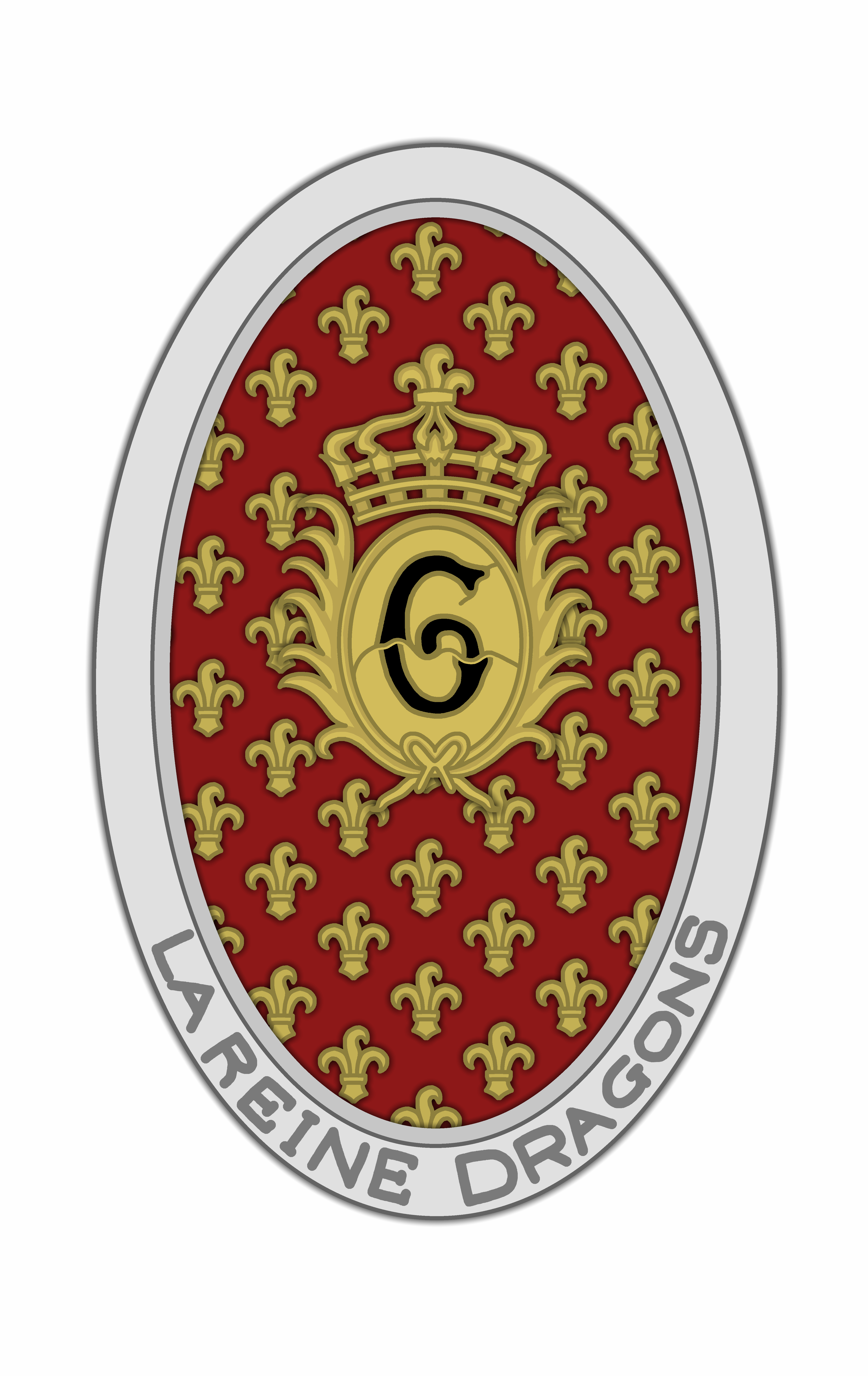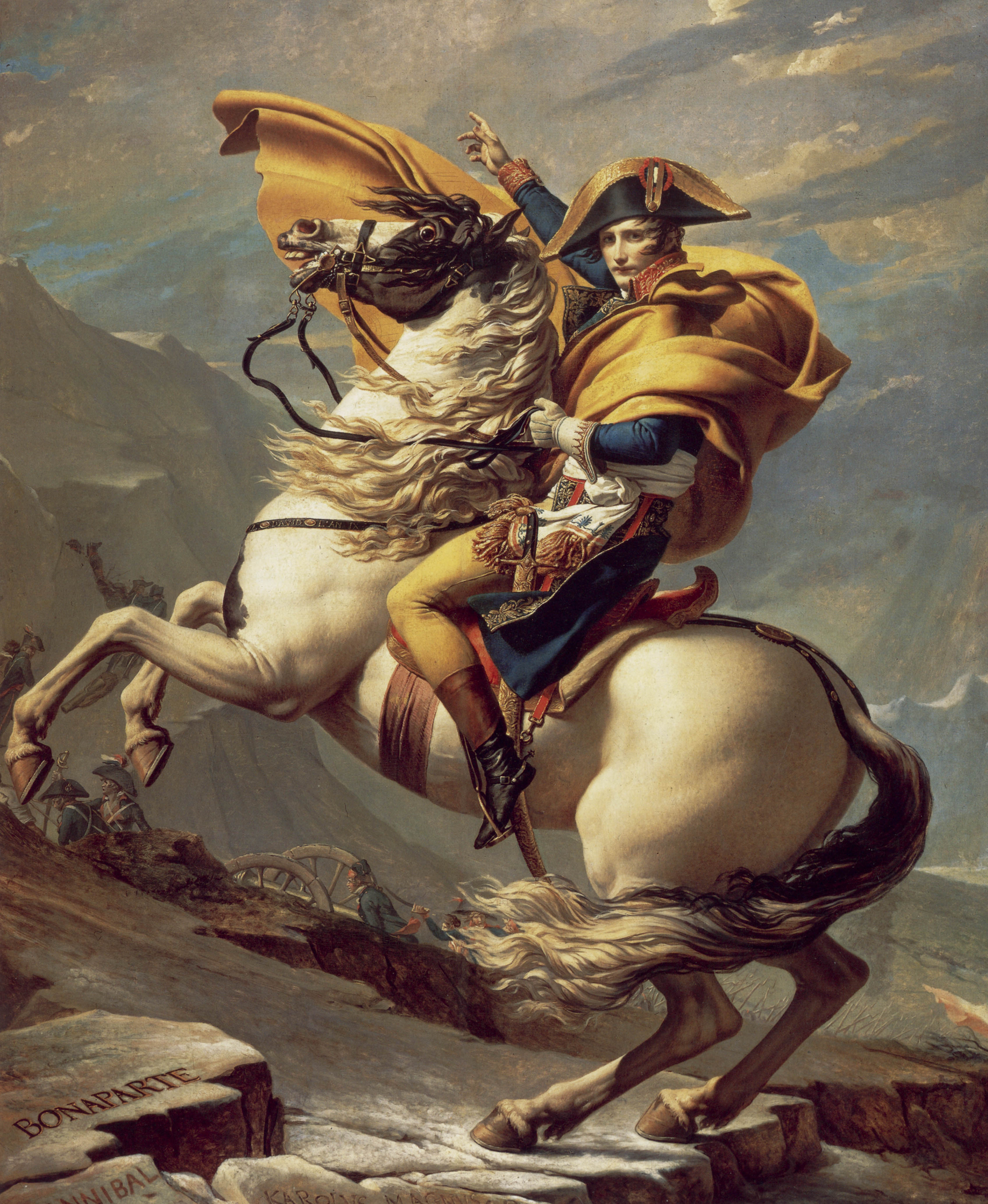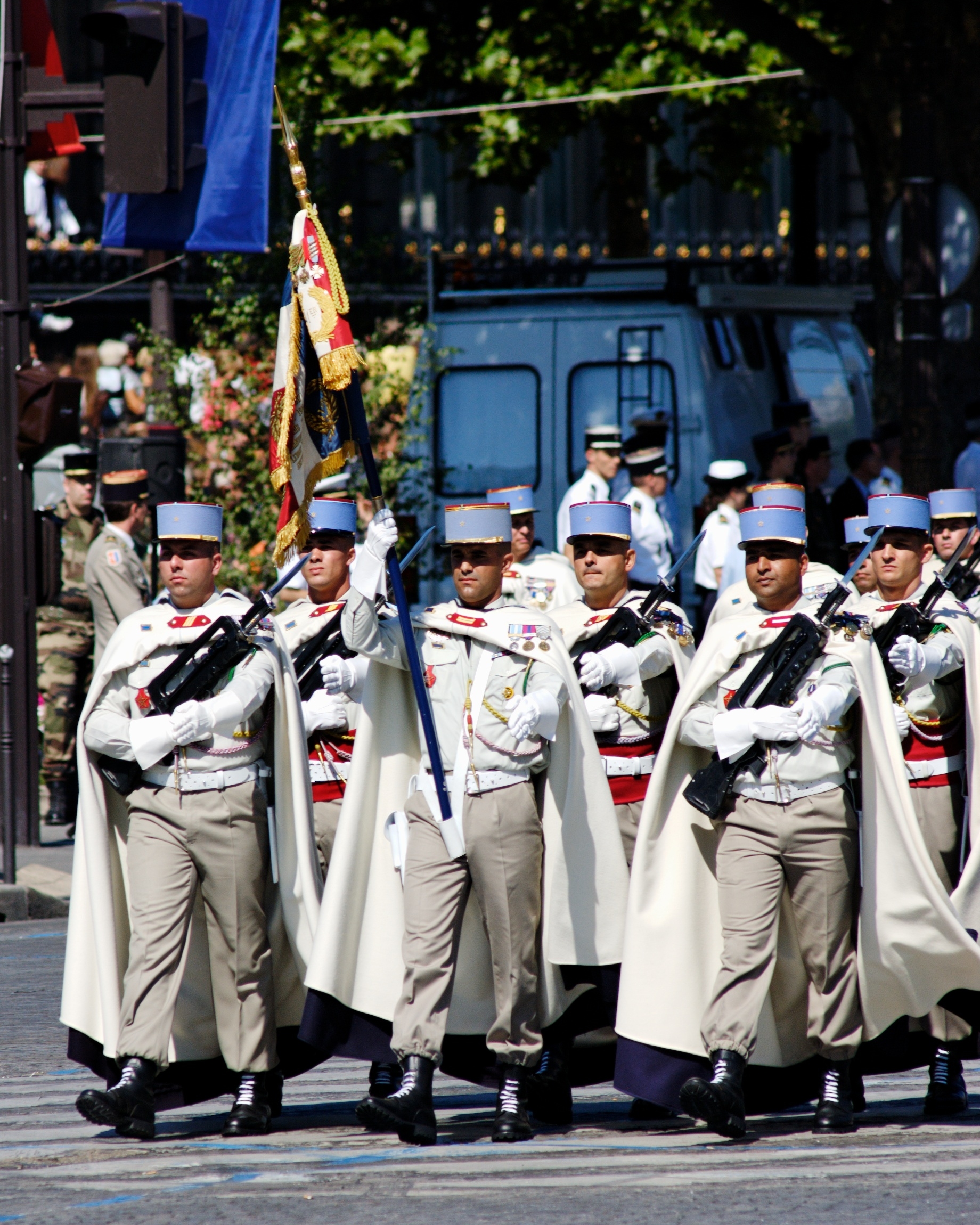|
6th Dragoon Regiment (France)
The 6th Regiment of Dragoons (''6e Régiment de Dragons'') is a French regiment of dragoon cavalry formed under the old regime, and dissolved in 1992. Creation and renames September 14, 1673: Creation as the ''Régiment d'Hocquincourt'' (Regiment of Hocquincourt) * 1675: Renamed to ''Régiment de Dragons de la Reine'' (Dragoons of the Queen) * 1791: Renamed to ''6e Régiment de Dragons'' (6th Regiment of Dragoons) * 1814: Renamed to ''Régiment de Dragons de Monsieur'' (Dragoons of Gentlemen) * 1815: Renamed back to ''6e Régiment de Dragons'', dissolved after the Hundred Days * 1815: Recreated as ''Régiment de Dragons de la Loire'' (Dragoons of the Loire) * 1825: Renamed to ''6e régiment de dragons'' * 1940: Dissolved * 1951: Recreated as ''6e régiment de dragons'' * 1963: Dissolved * 1964: Recreated as ''6e régiment de dragons'' out of the 3e Algerian Spahis Regiment * 1992: Final dissolution Regimental Leaders Until the French Revolution, the regimental leader were cal ... [...More Info...] [...Related Items...] OR: [Wikipedia] [Google] [Baidu] |
Haute-Saône
Haute-Saône (; Arpitan: ''Hiôta-Sona''; English: Upper Saône) is a department in the Bourgogne-Franche-Comté region of northeastern France. Named after the river Saône, it had a population of 235,313 in 2019.Populations légales 2019: 70 Haute-Saône INSEE Its is Vesoul; its sole subprefecture is Lure. History The departmen ...[...More Info...] [...Related Items...] OR: [Wikipedia] [Google] [Baidu] |
Battle Of Friedland
The Battle of Friedland (14 June 1807) was a major engagement of the Napoleonic Wars between the armies of the French Empire commanded by Napoleon I and the armies of the Russian Empire led by Count von Bennigsen. Napoleon and the French obtained a decisive victory that routed much of the Russian army, which retreated chaotically over the Alle River by the end of the fighting. The battlefield is located in modern-day Kaliningrad Oblast, near the town of Pravdinsk, Russia. The engagement at Friedland was a strategic necessity after the Battle of Eylau earlier in 1807 had failed to yield a decisive verdict for either side. The battle began when Bennigsen noticed the seemingly isolated reserve corps of Marshal Lannes at the town of Friedland. Bennigsen, who planned only to secure his march northward to Wehlau and never intended to risk an engagement against Napoleon's numerically-superior forces, thought he had a good chance of destroying these isolated French units before Nap ... [...More Info...] [...Related Items...] OR: [Wikipedia] [Google] [Baidu] |
Battle Of Austerlitz
The Battle of Austerlitz (2 December 1805/11 Frimaire An XIV FRC), also known as the Battle of the Three Emperors, was one of the most important and decisive engagements of the Napoleonic Wars. The battle occurred near the town of Austerlitz in the Austrian Empire (modern-day Slavkov u Brna in the Czech Republic). The decisive victory of Napoleon's Grande Armée at Austerlitz brought the War of the Third Coalition to a rapid end, with the Treaty of Pressburg signed by the Austrians later in the month. The battle is often cited as a tactical masterpiece, in the same league as other historic engagements like Cannae or Gaugamela.Farwell p. 64. "Austerlitz is generally regarded as one of Napoleon's tactical masterpieces and has been ranked as the equal of Arbela, Cannae, and Leuthen."Dupuy p. 102 After eliminating an Austrian army during the Ulm Campaign, French forces seized Vienna in November 1805. The Austrians avoided further conflict until the arrival of the Russians bols ... [...More Info...] [...Related Items...] OR: [Wikipedia] [Google] [Baidu] |
Battle Of Marengo
The Battle of Marengo was fought on 14 June 1800 between French forces under the First Consul Napoleon Bonaparte and Austrian forces near the city of Alessandria, in Piedmont, Italy. Near the end of the day, the French overcame General Michael von Melas's surprise attack, drove the Austrians out of Italy and consolidated Bonaparte's political position in Paris as First Consul of France in the wake of his coup d'état the previous November. Surprised by the Austrian advance toward Genoa in mid-April 1800, Bonaparte hastily led his army over the Alps in mid-May and reached Milan on 2 June. After cutting Melas's line of communications by crossing the River Po and defeating ''Feldmarschallleutnant'' (FML) Peter Karl Ott von Bátorkéz at Montebello on 9 June, the French closed in on the Austrian Army, which had massed in Alessandria. Deceived by a local double agent, Bonaparte dispatched large forces to the north and the south, but the Austrians launched a surprise attack ... [...More Info...] [...Related Items...] OR: [Wikipedia] [Google] [Baidu] |
Spahi
Spahis () were light-cavalry regiments of the French army recruited primarily from the indigenous populations of Algeria, Tunisia and Morocco. The modern French Army retains one regiment of Spahis as an armoured unit, with personnel now recruited in mainland France. Senegal also maintains a mounted unit with spahi origins as a presidential escort: the Red Guard. Etymology The name is the French form of the Ottoman Turkish word , a word derived from New Persian , meaning "army", or "horsemen"; or from , meaning "warriors". Early history Following the French occupation of Algiers in 1830, detachments of locally recruited irregular horsemen were attached to the regiments of light cavalry assigned to North African service. These auxiliaries were designated as '' chasseurs spahis''. Between 1834 and 1836 they were organised into four squadrons of regular spahis. In 1841 the 14 squadrons by then in existence were brought together in a single corps of spahis. Finally, in 1845 ... [...More Info...] [...Related Items...] OR: [Wikipedia] [Google] [Baidu] |
Third Battle Of The Aisne
The Third Battle of the Aisne (french: 3e Bataille de l'Aisne) was a battle of the German spring offensive during World War I that focused on capturing the Chemin des Dames Ridge before the American Expeditionary Forces arrived completely in France. It was one of a series of offensives, known as the ''Kaiserschlacht'', launched by the Germans in the spring and summer of 1918. Background The massive surprise attack (named ''Blücher-Yorck'' after two Prussian generals of the Napoleonic Wars) lasted from 27 May until 6 June 1918 and was the first full-scale German offensive following the Lys Offensive in Flanders in April. The Germans held the Chemin des Dames Ridge from the First Battle of the Aisne in September 1914 to 1917, when General Mangin captured it during the Second Battle of the Aisne (in the Nivelle Offensive). Operation Blücher-Yorck was planned primarily by General Erich Ludendorff, the First Quartermaster-General of the German Army, who was certain that ... [...More Info...] [...Related Items...] OR: [Wikipedia] [Google] [Baidu] |
Battle Of The Yser
The Battle of the Yser (french: Bataille de l'Yser, nl, Slag om de IJzer) was a battle of the First World War that took place in October 1914 between the towns of Nieuwpoort and Diksmuide, along a stretch of the Yser River and the Yperlee Canal, in Belgium. The front line was held by a large Belgian force, which halted the German advance in a costly defensive battle. The victory at the Yser allowed Belgium to retain a small strip of territory, with Germany in control of 95 per cent of Belgian territory, which made King Albert a Belgian national hero, sustained national pride and provided a venue for commemorations of heroic sacrifice for the next hundred years. Background German invasion of Belgium On 2 August 1914, the Belgian government refused passage through Belgium to German troops and on the night of the Belgian General Staff ordered the Third Division to Liège to obstruct a German advance. The German army invaded Belgium on the morning of 4 August. Cover ... [...More Info...] [...Related Items...] OR: [Wikipedia] [Google] [Baidu] |
Chambéry
Chambéry (, , ; Arpitan: ''Chambèri'') is the prefecture of the Savoie department in the Auvergne-Rhône-Alpes region of eastern France. The population of the commune of Chambéry was 58,917 as of 2019, while the population of the Chambéry metropolitan area was 253,430. It has been the historical capital of the Savoy region since the 13th century, when Amadeus V, Count of Savoy, made the city his seat of power. Together with other alpine towns Chambéry engages in the Alpine Town of the Year Association for the implementation of the Alpine Convention to achieve sustainable development in the Alpine Arc. Chambéry was awarded Alpine Town of the Year 2006. Geography Chambéry was founded at a crossroads of ancient routes through the Dauphiné (''Dôfenâ'') region of France, Switzerland, and Italy, in a wide valley between the Bauges and the Chartreuse Mountains on the Leysse River. The metropolitan area has more than 125,000 residents, extending from the vineyard s ... [...More Info...] [...Related Items...] OR: [Wikipedia] [Google] [Baidu] |
Saint-Mihiel
Saint-Mihiel () is a commune in the Meuse department in Grand Est in north-eastern France. Geography Saint-Mihiel lies on the banks of the river Meuse. History A Benedictine abbey was established here in 708 or 709 by Count Wulfoalde and his wife Adalsinde. The library, containing over 9,000 works, is still on the original site. During World War I, Saint-Mihiel was captured by the Germans in 1914, and was recaptured during the Battle of Saint-Mihiel by the American Expeditionary Forces (AEF) from 12 September to 19 September 1918. Population Features Saint-Mihiel is known for its sculptures by Renaissance sculptor Ligier Richier (1500–1567). Saint-Mihiel serves both as the starting and ending point of the 2014 video game Valiant Hearts: The Great War. See also *Communes of the Meuse department The following is a list of the 499 communes of the Meuse department of France. The communes cooperate in the following intercommunalities (as of 2020): [...More Info...] [...Related Items...] OR: [Wikipedia] [Google] [Baidu] |
Châlons-en-Champagne
Châlons-en-Champagne () is a city in the Grand Est region of France. It is the capital of the department of Marne, despite being only a quarter the size of the city of Reims. Formerly called Châlons-sur-Marne, the city was officially renamed in 1998. It should not be confused with the Burgundian town of Chalon-sur-Saône. History Châlons is conjectured to be the site of several battles including the Battle of Châlons fought in 274 between Roman Emperor Aurelian and Emperor Tetricus I of the Gallic Empire. The Catalaunian Fields was the site of the battle of Châlons in 451 which turned back the westward advance of Attila. It is the setting of the last operetta of Johann Strauss II, '' Die Göttin der Vernunft (The Goddess of Reason)'', (1897) and is mentioned in, “It’s the Great Pumpkin, Charlie Brown,” as Snoopy’s crash site after doing battle with the Red Baron. Plan de la cathedrale Châlons-sur-Marne 1859 Archives nationales France.jpg, Châlons en Cham ... [...More Info...] [...Related Items...] OR: [Wikipedia] [Google] [Baidu] |
Sedan, Ardennes
Sedan () is a commune in the Ardennes department and Grand Est region of north-eastern France. It is also the chef-lieu (administrative centre) of the arrondissement of the same name. Location The town is situated about 200 km from Paris, 85 km north-east of Reims, and 10 km south of the border with Belgium. The historic centre occupies a peninsula formed by a bend in the river Meuse. Sedan station has rail connections to Charleville-Mézières, Reims and Longwy. The A34 autoroute links Sedan with Charleville-Mézières and Reims. History Sedan was founded in 1424. In the 16th century Sédan was an asylum for Protestant refugees from the Wars of Religion. Until 1651, the Principality of Sedan belonged to the La Tour d'Auvergne family. It was at that time a sovereign principality. Their representative, Marshal Turenne, was born at Sedan on 11 September 1611. With help from the Holy Roman Empire, it defeated France at the Battle of La Marfée. Immediately afte ... [...More Info...] [...Related Items...] OR: [Wikipedia] [Google] [Baidu] |







